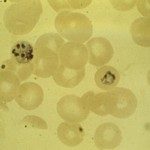Lien vers Pubmed [PMID] – 15843801
Nature 2005 Jun; 435(7044): 948-53
During vertebrate development, successive phases of embryonic and fetal myogenesis lead to the formation and growth of skeletal muscles. Although the origin and molecular regulation of the earliest embryonic muscle cells is well understood, less is known about later stages of myogenesis. We have identified a new cell population that expresses the transcription factors Pax3 and Pax7 (paired box proteins 3 and 7) but no skeletal-muscle-specific markers. These cells are maintained as a proliferating population in embryonic and fetal muscles of the trunk and limbs throughout development. Using a stable green fluorescent protein (GFP) reporter targeted to Pax3, we demonstrate that they constitute resident muscle progenitor cells that subsequently become myogenic and form skeletal muscle. Late in fetal development, these cells adopt a satellite cell position characteristic of progenitor cells in postnatal muscle. In the absence of both Pax3 and Pax7, further muscle development is arrested and only the early embryonic muscle of the myotome forms. Cells failing to express Pax3 or Pax7 die or assume a non-myogenic fate. We conclude that this resident Pax3/Pax7-dependent progenitor cell population constitutes a source of myogenic cells of prime importance for skeletal muscle formation, a finding also of potential value in the context of cell therapy for muscle disease.

